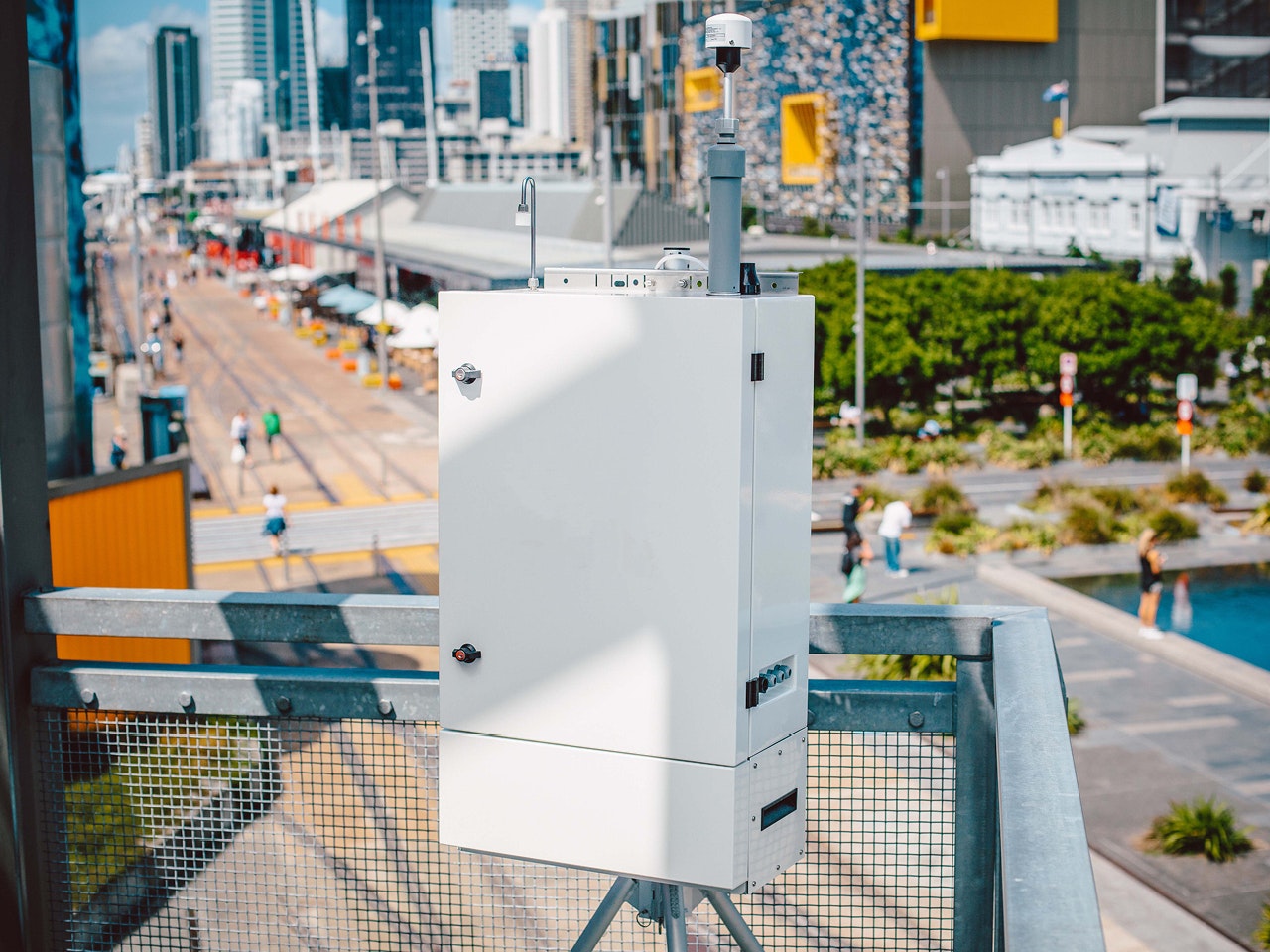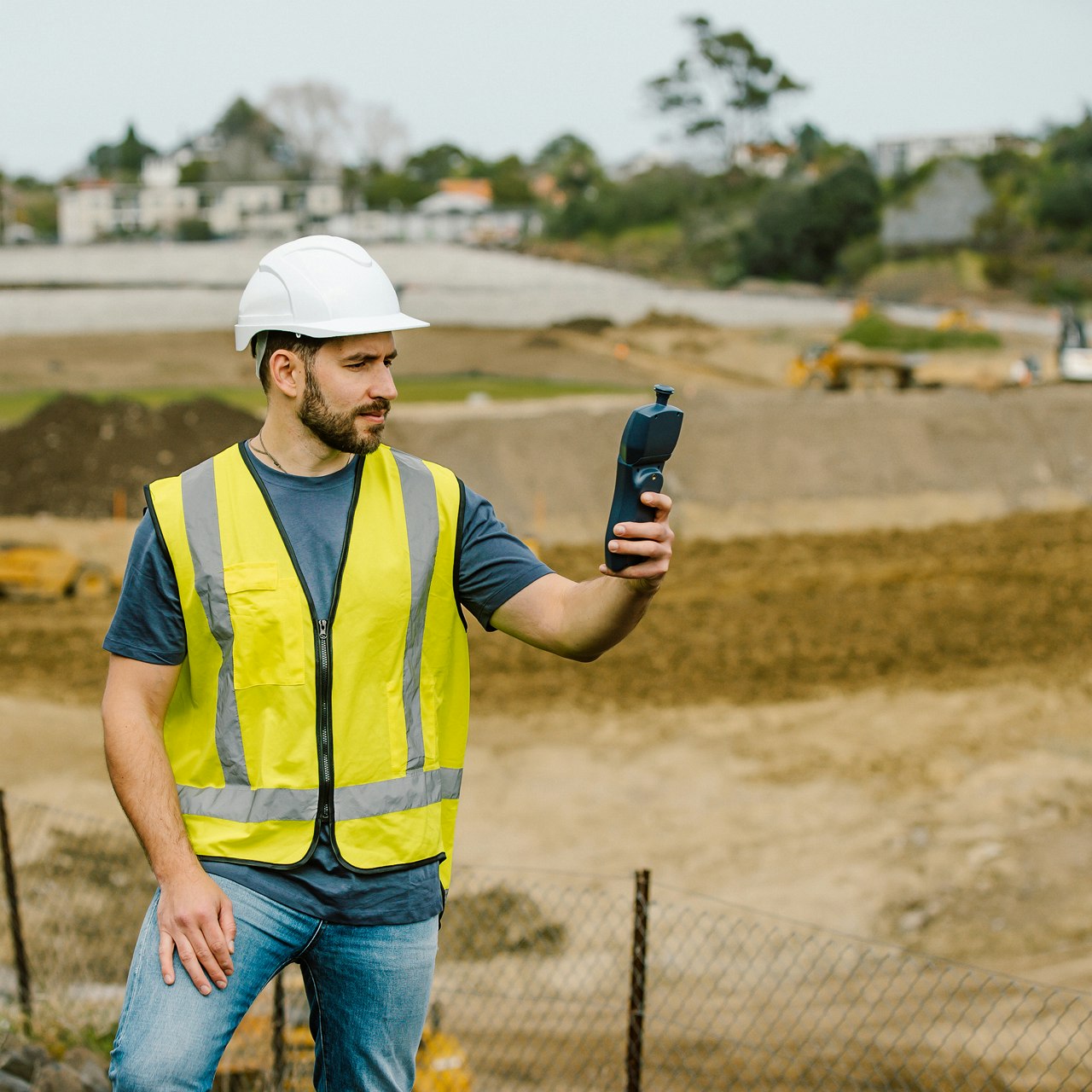Measurements
Hydrogen Sulfide H2S
Aeroqual designs and delivers monitors that measure hydrogen sulfide (H2S). Choose from our perimeter or handheld air monitoring range.
Here we cover H2S measurement principles, specifications and performance.
Overview of hydrogen sulfide
Hydrogen sulfide (H2S) is a strong-smelling compound often associated with industrial processes, such as sewage treatment or waste disposal. H2S is not listed among the six criteria health pollutants cited by the US EPA.
However, legislation controlling the levels of H2S in ambient air is defined in most countries and many jurisdictions have ambient exposure standards for H2S.
Perimeter air quality monitors
The H2S analyzer module features in our perimeter air quality monitors: AQS 1 Air Quality Monitor and AQM 65 Monitoring Station.
Hydrogen sulfide module measurement principle
The hydrogren sulfide module uses a patented automatic baseline correction (ABC) design to measure H2S in ambient air. It combines an advanced electrochemical H2S sensor with a sample/zero cycling operation to deliver near reference performance in ambient H2S monitoring.
The sensor used in the H2S module is an electrochemical sensor. The sensor generates an electrical current in nA which is proportional to the concentration of gas which comes in to contact with the sensor.
The module uses two different flow paths, one of which passes through a proprietary scrubber to remove H2S and produce a baseline measurement. The flow rate is determined by a flow control orifice on the exhaust side of the sensor and measured at the inlet to the sensor module (expected to be approximately 60 mL min-1).
The sensor current is measured during both the baseline and sample measurement states and these values are used to calculate the H2S concentration using a proprietary algorithm approximately once per minute.
Module specifications and performance
The H2S module performance specifications are given in the table below.
H2S Analyzer Module
Range (ppb)
0 - 5,000
Display Resolution (ppb)
0.1
Noise: Zero (ppb); Span (% of reading)
1; 0.1%
Limit of Detection (ppb)
2
Precision
1% of reading or 3 ppb
Linearity (% of FS)
0.5%
24 hr Drift: Zero (ppb); Span (% of FS)
<1; <0.5%
Module calibration and traceability
Just like a regulatory H2S analyzer using UV fluorescence, the H2S module can be field calibrated using standard calibration equipment and reference gases. This ensures the module calibration is fully traceable to NIST primary standards.
The H2S module factory calibration is achieved using a zero-air source, certified calibration gas standards and a certified gas dilution calibrator. The Aeroqual AirCal 1000 or 8000 systems can be used to calibrate the H2S module in the field.
Calibration frequency will be dependent on the user’s data quality objectives and Quality Assurance Project Plan (QAPP), but based on the low rate of field drift the recommended calibration frequency is 1-3 months.
To demonstrate module performance, a six-point gas test, at known H2S concentrations, was carried out using the equipment outlined above. The module shows good linearly (R2 = 0.99) over the 0–1600 ppb range studied.
Hydrogen sulfide module time series plot
Hydrogen sulfide module scatter plot of data with linear regression and coefficient of determination
Interferences
The Aeroqual H2S module is specific towards H2S but other gases in the environment may also cause a response from the H2S sensor. These do not indicate a fault. These effects are part of the module behavior and should be considered when examining data.
The H2S module response to other ambient air pollutants is documented in the table below.
Pollutant
Test Concentration (ppm)
Typical Module Response (ppm)
CO
1.0
0.005
NO2
0.1
-0.001
O3
0.1
-0.001
SO2
0.1
0.010
Ethylene
0.5
0.001
Hydrogen sulfide module expected lifetime
The non-catalytic chemical scrubber has an expected life of 2 to 3 years. The internal solenoid has an expected life of 2 to 3 years. The GSE sensor has an average expected life of 1 to 2 years in climates with moderate humidity and particle loading.
Handheld air monitors and fixed indoor monitors
The H2S sensor head features in our handheld air quality monitors: Ranger and Series 500, and indoor fixed monitor range Series 900.
Sensor head measurement principle
The Aeroqual hydrogen sulfide sensor head uses a gas sensitive electrochemical (GSE) sensor. The electrochemical gas sensor in the sensor head generates an electrical current in nA, which is proportional to the concentration of gas that comes in contact with the sensor. The sensor current is converted into H2S concentration.
Hydrogen sulfide sensor head specifications
The table below contains the hydrogen sulfide sensor head specifications. These can be used on our Ranger, Series 500, and Series 900 products. The 0-10 ppm sensor head is designed for outdoor environmental air monitoring, while the 0-100 ppm sensor head is designed for industrial health and safety.
Sensor code
EHS
EHT
Sensor type
GSE
GSE
Range
0-10 ppm
0-100 ppm
Detection limit
0.04 ppm
0.4 ppm
Accuracy of factory calibration
<±0.5 ppm 0-0.5 ppm
<±10% 0.5-10 ppm
<±0.5 ppm 0-5 ppm
<±10% 5-100 ppm
Display resolution
0.01 ppm
0.1 ppm
Response time
30 seconds
30 seconds
Sensor head cross sensitivities
Although the GSE sensor in the H2S sensor head is designed to measure H2S, it does show cross-interferences to other gases. The table below shows the response in ppm of the H2S sensor head to different gases.
Gas
Hydrogen Sulfide (H2S) (SH EHS, SH EHT)
O3 1 ppm
-
CO 25 ppm
<0.4
NO2 1 ppm
<-0.3
SO2 1 ppm
<0.1
H2S 1 ppm
-
Ethylene 5 ppm
<0.008
CO2 400 ppm
-
H2 1 ppm
<0.002
NO 5 ppm
<0.1
Products that measure hydrogen sulfide
The following products measure hydrogen sulfide, as well as particulate matter and gaseous pollutants in real-time.
Articles
Case Study - Brownfield Redevelopment
Texas Landfill Study Gathers Large Scale of Quality Data on a Limited Budget
Case Study - Occupational Health and Safety
Ship-Based Air Monitoring Network Aids Development of Offshore Energy Facility
Blog - Remediation
Producing Defensible Data: The Importance of Keeping Calibration Certificates Up to Date
Inquire about our hydrogen sulfide products
Our H2S advanced monitoring systems deliver hyper-local data and real-time alerts, giving you actionable data to make the decisions that matter.












